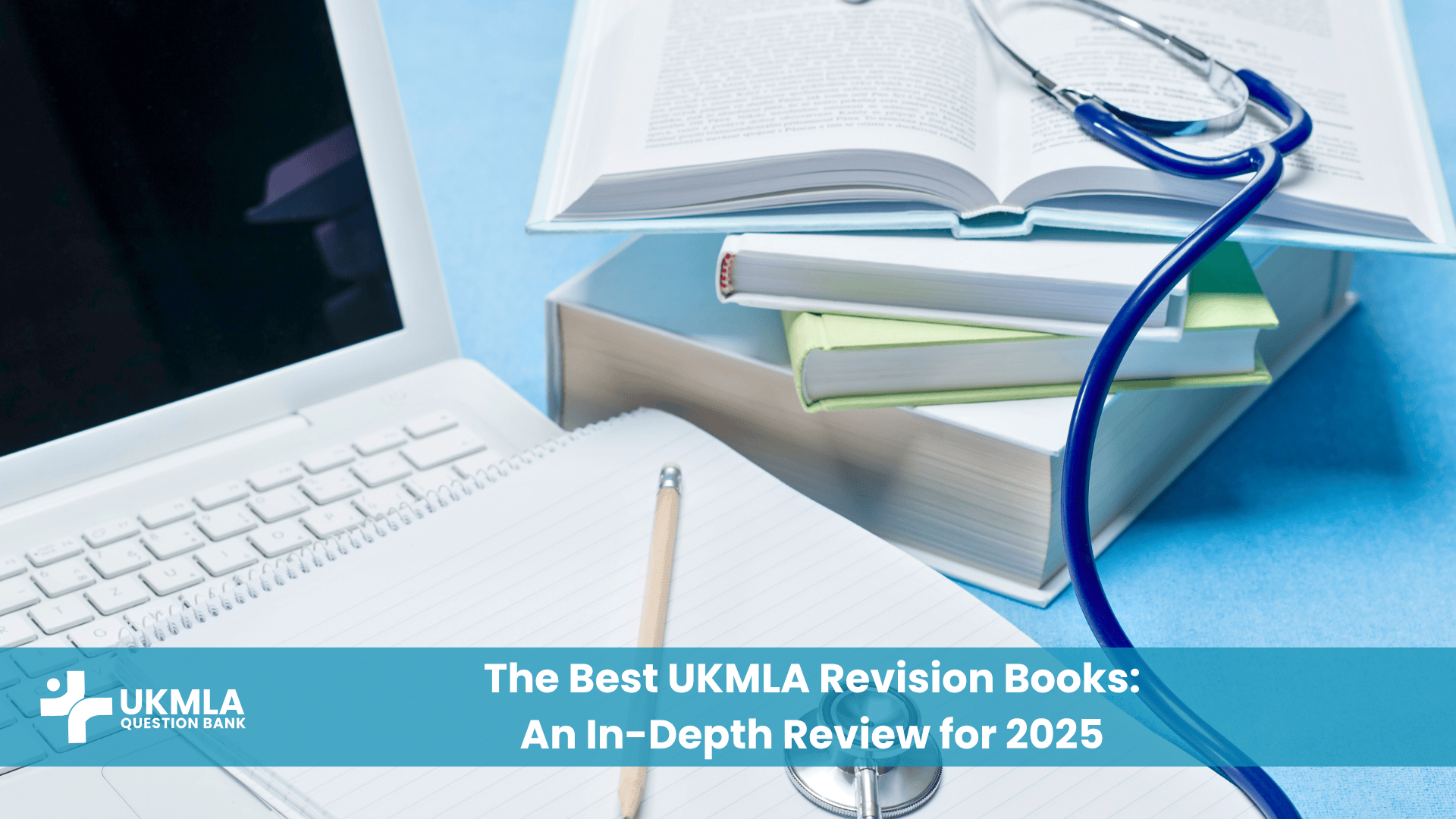Introduction
The journey to medical licensure in the UK culminates in the rigorous UK Medical Licensing Assessment (UKMLA), a formidable challenge demanding mastery of vast clinical knowledge and its practical application. Among the diverse specialities assessed, Obstetrics and Gynaecology (O&G) holds a uniquely critical position. It encompasses the intricate complexities of female reproductive health, pregnancy, childbirth, and puerperium, touching upon fundamental aspects of both medical and surgical care. For any aspiring UK doctor, a robust understanding of UKMLA Obstetrics Gynaecology Essentials is not merely academic; it is vital for safe clinical practice.
This comprehensive guide is meticulously designed to distil the UKMLA Obstetrics Gynaecology Essentials, focusing on core conditions and their management that are consistently high-yield for exam success. We’ll navigate the complexities of obstetric emergencies, delve into common gynaecological presentations, and touch upon crucial ethical considerations, all within the context of UK clinical guidelines.
By focusing on these critical areas, you’ll build the confidence and knowledge to excel in your UKMLA, ensuring you are well-prepared for the demands of foundation year training and beyond.
For a broader understanding of the examination structure, you may find our article on Understanding the UKMLA Exam Format particularly helpful. For more detailed information on the UKMLA itself, consult the General Medical Council (GMC) official UKMLA page, and for specific details on the Obstetrics and Gynaecology curriculum relevant to UK doctors, refer to the GMC’s O&G curriculum guidance.
Key Takeaways
O&G is High-Yield for UKMLA: It constitutes a significant portion of the AKT, testing both medical and surgical aspects crucial for “readiness for safe practice.”
Master Obstetric Emergencies: Focus on early pregnancy complications (ectopic, miscarriage), hypertensive disorders (pre-eclampsia, eclampsia), and haemorrhage (APH, PPH).
Understand Core Gynaecological Conditions: Be proficient in abnormal uterine bleeding, pelvic pain/infections (PID), common gynaecological cancers (cervical, ovarian, endometrial), and contraception.
Grasp Ethical & Professional Dilemmas: UKMLA often tests scenarios involving consent, safeguarding, and sensitive reproductive choices.
Utilize UK Guidelines: Familiarity with NICE and RCOG guidelines is essential for management questions.
Practice is Paramount: Apply your knowledge through practice questions to solidify understanding for exam success.
Why Mastering UKMLA Obstetrics Gynaecology Essentials is Crucial for Your Exam
The significant presence of Obstetrics and Gynaecology questions in the UKMLA AKT (Applied Knowledge Test) reflects its paramount importance in the daily practice of a junior doctor. This speciality is not just about isolated facts; it’s about integrated knowledge, quick decision-making, and understanding sensitive patient care pathways.
Exam Weighting & Significance
O&G consistently represents a substantial proportion of the UKMLA AKT. Questions often span from basic physiological understanding of pregnancy and the menstrual cycle to complex clinical scenarios involving acute emergencies or chronic gynaecological conditions.
Its dual nature, encompassing both medical (e.g., pre-eclampsia management) and surgical (e.g., ectopic pregnancy, PPH management) aspects, means it tests a wide array of competencies crucial for a generalist doctor. Success in this section can significantly impact your overall UKMLA score.
Clinical Relevance & “Readiness for Safe Practice”
Beyond the exam, UKMLA Obstetrics Gynaecology Essentials are fundamental to safeguarding patient well-being, particularly for women and their unborn children.
The UKMLA’s overarching goal is to ensure ‘readiness for safe practice,’ and a significant part of this involves competence in managing common and critical O&G presentations.
From recognising the subtle signs of sepsis in a pregnant woman to understanding safeguarding issues in domestic abuse, O&G knowledge directly translates to your ability to make safe, timely, and effective clinical decisions on the wards. It’s about ensuring you can protect vulnerable patients and provide appropriate care in often time-critical situations. Understanding this core principle is key to a holistic approach to the exam, as explored further in A Deep Dive into the ‘Readiness for Safe Practice’ Domain of UKMLA.
Core Obstetric Conditions & Management for UKMLA
Mastering the following obstetric conditions and their core management principles is non-negotiable for UKMLA Obstetrics Gynaecology Essentials. These represent frequently encountered scenarios or life-threatening emergencies.
Early Pregnancy Complications
Ectopic Pregnancy: This is a true gynaecological emergency where a fertilised egg implants outside the uterine cavity, most commonly in the fallopian tube.
Presentation: Classic triad of amenorrhoea, unilateral abdominal pain, and vaginal bleeding. However, presentation can be atypical. Be vigilant for signs of shock (tachycardia, hypotension, pallor) indicating rupture.
Management: Diagnosis is key (serum hCG, transvaginal ultrasound). Management options include expectant, medical (methotrexate for stable, unruptured ectopic <3.5cm), or surgical (laparoscopic salpingectomy or salpingostomy for ruptured or unstable cases). Early recognition is crucial to prevent life-threatening haemorrhage.
Miscarriage: The spontaneous loss of a pregnancy before 24 weeks gestation.
Types: Threatened, inevitable, incomplete, complete, missed, septic.
Presentation: Vaginal bleeding (often darker than fresh), abdominal pain.
Management: Varies by type. Expectant, medical (prostaglandins), or surgical (manual vacuum aspiration, ERPC). Emotional support is vital.
Hypertensive Disorders of Pregnancy
These conditions are a significant cause of maternal and fetal morbidity and mortality and are high-yield for UKMLA.
Pre-eclampsia: New-onset hypertension (>140/90 mmHg) after 20 weeks gestation with proteinuria (or other organ dysfunction).
Presentation: Often asymptomatic. May have headache, visual disturbances, epigastric pain, oedema.
Management: Close monitoring (BP, urine, bloods, fetal wellbeing). Definitive treatment is delivery of the placenta. Antihypertensives (e.g., labetalol, nifedipine) to control BP. Magnesium sulphate for seizure prophylaxis in severe pre-eclampsia/eclampsia.
Eclampsia: The occurrence of one or more generalised seizures in a woman with pre-eclampsia, not attributable to other causes.
Management: ABCDE approach, call for help, secure airway, administer IV Magnesium Sulphate. Delivery once stable.
External Link Suggestion: For detailed management protocols, refer to NICE Clinical Guideline [CG107] on Hypertensive disorders in pregnancy.
Haemorrhage in Pregnancy
Both antepartum and postpartum haemorrhage are obstetric emergencies demanding rapid assessment and management.
Antepartum Haemorrhage (APH): Bleeding from the genital tract after 24 weeks gestation but before the birth of the baby.
Causes: Placenta praevia (painless, bright red bleeding, normal fetal heart rate) vs. Placental abruption (painful, dark red bleeding, tender uterus, fetal distress/death). Other causes include local cervical lesions.
Management: Urgent assessment (ABCDE), fluid resuscitation, cross-match, urgent obstetric review. USS for localisation if placenta praevia suspected. Fetal monitoring. Delivery may be indicated.
Postpartum Haemorrhage (PPH): Blood loss of ≥500ml after vaginal birth or ≥1000ml after caesarean section within 24 hours (primary PPH) or from 24 hours up to 6 weeks postpartum (secondary PPH).
Causes (4 Ts): Tone (uterine atony, 70% of cases), Trauma (lacerations, rupture), Tissue (retained placenta), Thrombin (coagulopathy).
Management: ABCDE, call for help, bimanual uterine compression, uterotonics (oxytocin, carboprost, misoprostol), identify and manage cause (e.g., repair lacerations, remove retained products), massive haemorrhage protocol if needed.
Labour & Delivery: Normal and Complicated
Understanding the physiological process of labour and recognizing deviations is essential.
Stages of Labour: First (onset to full dilatation), Second (full dilatation to birth of baby), Third (birth of baby to delivery of placenta).
Active Management of Third Stage: Administration of uterotonics (oxytocin), controlled cord traction, and uterine massage to prevent PPH.
Key Obstetric Emergencies in Labour:
Shoulder Dystocia: Inability of the fetal shoulder to pass after the head has been delivered. Requires specific manoeuvres (e.g., McRoberts’, suprapubic pressure).
Cord Prolapse: Umbilical cord descends before the presenting part, risking compression. An emergency requiring immediate action (manual elevation of presenting part, urgent C-section).
Table 1: Differential Diagnosis of Vaginal Bleeding in Pregnancy
This table outlines common causes of vaginal bleeding throughout different trimesters, a frequent clinical presentation in O&G.
| Trimester | Common Causes | Key Features | Management Principles |
| 1st | Miscarriage | Abdominal pain, cramping, variable bleeding | Expectant, medical, or surgical; supportive care |
| Ectopic Pregnancy | Unilateral pain, amenorrhoea, +/- bleeding, shock | Urgent TVS & hCG; medical or surgical emergency | |
| Implantation Bleeding | Light spotting, self-limiting | Reassurance | |
| 2nd/3rd | Placenta Praevia | Painless, bright red bleeding, normal fetal status | Strict observation, C-section if severe/unstable |
| Placental Abruption | Painful, dark red bleeding, tender uterus, fetal distress | Emergency C-section (if viable), ABCDE, resuscitation | |
| Vasa Praevia | Painless bleeding (fetal origin), fetal compromise | Emergency C-section, prompt recognition crucial | |
| Cervical/Vaginal Lesions | Spotting, post-coital bleeding, no abdominal pain | Examination, local treatment |
Core Gynaecological Conditions & Management for UKMLA
Beyond pregnancy, a strong grasp of gynaecological conditions is integral to UKMLA Obstetrics Gynaecology Essentials. These range from common complaints to life-threatening conditions.
Abnormal Uterine Bleeding (AUB) & Amenorrhoea
A common presentation in general practice and gynaecology clinics.
Abnormal Uterine Bleeding (AUB): Any bleeding outside of normal menstruation.
Causes: Structurally (PALM: Polyps, Adenomyosis, Leiomyoma, Malignancy/Hyperplasia) or Non-structurally (COEIN: Coagulopathy, Ovulatory dysfunction, Endometrial, Iatrogenic, Not yet classified).
Management: History, examination, investigations (pelvic USS, hysteroscopy/biopsy if indicated). Management depends on cause (e.g., hormonal therapy, surgery).
Amenorrhoea: Absence of menstruation. Primary (never started by 16) vs. Secondary (absence for >6 months after previously established cycles).
Causes: Broad range from physiological (pregnancy, lactation, menopause) to pathological (e.g., PCOS, hypothalamic, pituitary, ovarian failure).
Management: Thorough history and examination, hormonal blood tests, imaging.
Pelvic Pain & Infections
Acute and chronic pelvic pain are frequent reasons for presentation.
Acute Pelvic Pain:
Differential Diagnoses: Ectopic pregnancy, ovarian torsion, ruptured ovarian cyst, acute PID, appendicitis, UTI. Always rule out pregnancy.
Management: Urgent assessment, pain relief, targeted investigations (USS, FBC, CRP, urine dip, pregnancy test) to identify cause.
Pelvic Inflammatory Disease (PID): An infection of the upper female genital tract (uterus, fallopian tubes, ovaries). Often polymicrobial, frequently caused by STIs like Chlamydia or Gonorrhoea.
Presentation: Lower abdominal pain, deep dyspareunia, abnormal vaginal discharge, fever. Cervical excitation and adnexal tenderness on examination.
Management: Broad-spectrum antibiotics (e.g., ceftriaxone + doxycycline + metronidazole). Partner notification and treatment. Complications include subfertility and chronic pelvic pain.
Common Gynaecological Cancers
Junior doctors need to recognise red flag symptoms and understand screening programmes.
Cervical Cancer:
Risk Factors: HPV infection (primary cause), smoking, immunosuppression.
Screening: NHS Cervical Screening Programme (smear tests) for women aged 25-64.
Presentation: Post-coital bleeding, intermenstrual bleeding, abnormal vaginal discharge.
Ovarian Cancer:
Risk Factors: Age, family history (BRCA mutations), nulliparity.
Presentation: Often vague symptoms (bloating, early satiety, abdominal pain, urinary symptoms), leading to late diagnosis.
Investigation: CA125 blood test, pelvic USS.
Endometrial Cancer:
Risk Factors: Obesity, unopposed oestrogen, Tamoxifen.
Presentation: Post-menopausal bleeding (most common symptom), abnormal pre-menopausal bleeding.
Investigation: Transvaginal USS (endometrial thickness), endometrial biopsy.
Contraception, Subfertility & Sexual Health
These areas are crucial for patient counselling and management in both primary and secondary care.
Contraception: Understanding available methods (combined hormonal, progestogen-only, intrauterine, barrier, emergency) and their suitability based on patient factors (e.g., medical comorbidities). Importance of FSRH guidelines.
Subfertility: Failure to conceive after regular unprotected intercourse for one year.
Investigation: Semen analysis, ovulation assessment, tubal patency tests.
Management: Lifestyle advice, ovulation induction, assisted reproductive techniques.
Sexually Transmitted Infections (STIs):
Common: Chlamydia, Gonorrhoea, Herpes Simplex, Syphilis, HIV.
Presentation: Discharge, pain, ulcers, asymptomatic.
Management: Targeted antibiotics, antivirals. Contact tracing is crucial.
Table 2: Overview of Common Contraception Methods (UK Context)
This table summarises key aspects of widely used contraception methods, important for UKMLA.
| Method | Type | Effectiveness (Perfect Use) | Pros | Cons |
| Combined Oral Contraceptive Pill (COCP) | Hormonal (estrogen + progestogen) | 99.70% | Highly effective, reduces AUB, acne | Daily pill, DVT/PE risk (minor), no STI protection |
| Progestogen-Only Pill (POP) | Hormonal (progestogen) | 99% | Fewer contraindications, suitable for breastfeeding | Strict timing, irregular bleeding |
| Contraceptive Implant | Hormonal (progestogen) | >99.9% | Long-acting (3 yrs), “fit and forget” | Insertion/removal procedure, irregular bleeding |
| Intrauterine Device (IUD) | Non-hormonal | >99% | Long-acting (5-10 yrs), no hormones | Heavier/more painful periods, insertion procedure |
| Intrauterine System (IUS) | Hormonal (progestogen) | >99.8% | Long-acting (3-5 yrs), reduces AUB | Insertion procedure, irregular bleeding initially |
| Contraceptive Injection | Hormonal (progestogen) | 99.80% | Long-acting (13 wks), “fit and forget” | Weight gain, delayed return to fertility, bone density concerns |
| Male Condom | Barrier | 98% | STI protection, no hormones, widely available | User-dependent, breakage risk |
Ethical & Professional Dilemmas in O&G for UKMLA
O&G is rich with ethical and professional challenges that the UKMLA often tests. Understanding these nuances is a key component of UKMLA Obstetrics Gynaecology Essentials.
Consent in O&G
Capacity & Informed Consent: Ensuring patients have the capacity to make decisions and that consent is fully informed (discussing risks, benefits, alternatives). This is particularly complex in O&G with dual patients (mother and fetus).
Refusal of Treatment: Respecting a pregnant woman’s right to refuse treatment, even if it might harm the fetus, while ensuring all information is provided.
Emergency Situations: Dealing with situations where consent is difficult or impossible to obtain (e.g., unconscious patient in obstetric emergency), balancing immediate life-saving treatment with patient autonomy.
Safeguarding & Domestic Abuse
Recognition & Reporting: Identifying signs of domestic abuse or child safeguarding concerns in pregnant women or new mothers.
Duties: Understanding your professional responsibility to act in the best interests of the patient and/or unborn child, including appropriate referral to safeguarding services.
Supporting Vulnerable Patients: Approaching sensitive topics with empathy and providing access to resources. This ties directly into the GMC’s Good Medical Practice guidelines. For more on professional standards, see Professionalism and Patient Safety in the UKMLA CPSA.
Reproductive Choices & Sensitive Topics
Termination of Pregnancy: Understanding the legal framework (Abortion Act 1967), the process, and managing ethical dilemmas related to patient choice.
Antenatal Screening: Discussing the implications of screening results (e.g., for Down’s syndrome) with parents, ensuring non-directive counselling.
Managing Sensitive Discussions: Approaching topics like fertility, stillbirth, and genetic counselling with compassion and cultural sensitivity.
Frequently Asked Questions (FAQ) Your UKMLA Obstetrics Gynaecology Questions Answered
High-yield topics for UKMLA Obstetrics Gynaecology Essentials include: early pregnancy complications (ectopic, miscarriage), hypertensive disorders of pregnancy (pre-eclampsia, eclampsia), antepartum and postpartum haemorrhage, normal and complicated labour, abnormal uterine bleeding, pelvic inflammatory disease, common gynaecological cancers (cervical, ovarian, endometrial), contraception, and ethical dilemmas in O&G.
While the exact percentage can vary slightly year to year, O&G typically constitutes a significant portion of the UKMLA AKT, often ranging from 10-15% of the questions. This makes it a crucial domain to master for overall exam success.
Yes, definitely. For UKMLA Obstetrics Gynaecology Essentials, you must be familiar with key guidelines from NICE (National Institute for Health and Care Excellence) and RCOG (Royal College of Obstetricians and Gynaecologists). Examples include guidelines on hypertensive disorders in pregnancy, management of PPH, contraception, and screening programmes.
The key differentiating features are usually pain and fetal heart rate. Placenta praevia typically presents with painless, bright red bleeding and usually a normal fetal heart rate. Placental abruption presents with painful, dark red bleeding, a tender, rigid uterus, and often signs of fetal distress or death.
The initial management of PPH (primary PPH) follows the “4 Ts” principle: Tone (uterine atony – massage uterus, give uterotonics like oxytocin), Trauma (identify and repair lacerations), Tissue (check for and remove retained placental tissue), and Thrombin (manage coagulopathy). Alongside this, ensure ABCDE assessment, call for help, and initiate fluid resuscitation.
Key red flags for UKMLA Obstetrics Gynaecology Essentials include:
Cervical: Post-coital bleeding, intermenstrual bleeding.
Endometrial: Post-menopausal bleeding (most common), unexplained abnormal pre-menopausal bleeding.
Ovarian: Persistent bloating, early satiety, pelvic/abdominal pain, urinary symptoms (frequency/urgency), changes in bowel habit (often vague).
Understanding contraception is very important for the UKMLA. Questions often cover efficacy, contraindications, side effects, and patient counselling for various methods (e.g., COCP, POP, IUD, IUS, implant, injection, barrier methods). Knowing when each method is appropriate is key.
Common ethical scenarios in UKMLA Obstetrics Gynaecology Essentials often involve consent (especially with capacity issues or refusal of treatment), safeguarding (e.g., domestic abuse, FGM), reproductive choices (e.g., termination of pregnancy, antenatal screening for fetal anomalies), and breaking bad news. These test communication and professional judgment.
An IUD (Intrauterine Device) is a non-hormonal copper coil that prevents pregnancy by causing a sterile inflammatory reaction. An IUS (Intrauterine System) is a hormonal device (releasing progestogen) that thickens cervical mucus and thins the uterine lining. An IUD is preferred if hormones are contraindicated or not desired; an IUS is often preferred for managing heavy menstrual bleeding due to its hormonal effect.
Both Obstetrics and Gynaecology are essential and weighted significantly. While Obstetrics often presents more acute emergencies that are frequently tested, Gynaecology covers a broad range of common presentations and important cancer screening topics. It’s crucial to have a balanced understanding of both areas as part of your UKMLA Obstetrics Gynaecology Essentials.
Conclusion
Mastering UKMLA Obstetrics Gynaecology Essentials is not just about passing an exam; it’s about acquiring foundational knowledge crucial for your entire medical career. By comprehensively understanding core obstetric and gynaecological conditions, their presentations, and their management within UK guidelines, you equip yourself with the confidence and competence demanded of a safe and effective junior doctor. The UKMLA assesses your “readiness for safe practice,” and a strong grasp of O&G is unequivocally central to this.
This guide has provided a focused overview of high-yield areas, from acute obstetric emergencies like PPH to common gynaecological complaints such as AUB, alongside vital ethical considerations. Integrate this knowledge with continuous practice questions, clinical experience, and consistent review. Embrace the breadth and depth of O&G, and you will undoubtedly strengthen your overall UKMLA preparation and build a robust foundation for your future in medicine.
Unlock Your UKMLA O&G Potential Today!
Ready to solidify your UKMLA Obstetrics Gynaecology Essentials? Don’t just read – apply your knowledge! Start practising with our comprehensive UKMLA Question Bank to tackle real exam-style questions on O&G scenarios. Reinforce your learning, identify your strengths and weaknesses, and accelerate your path to UKMLA success in this vital speciality.




